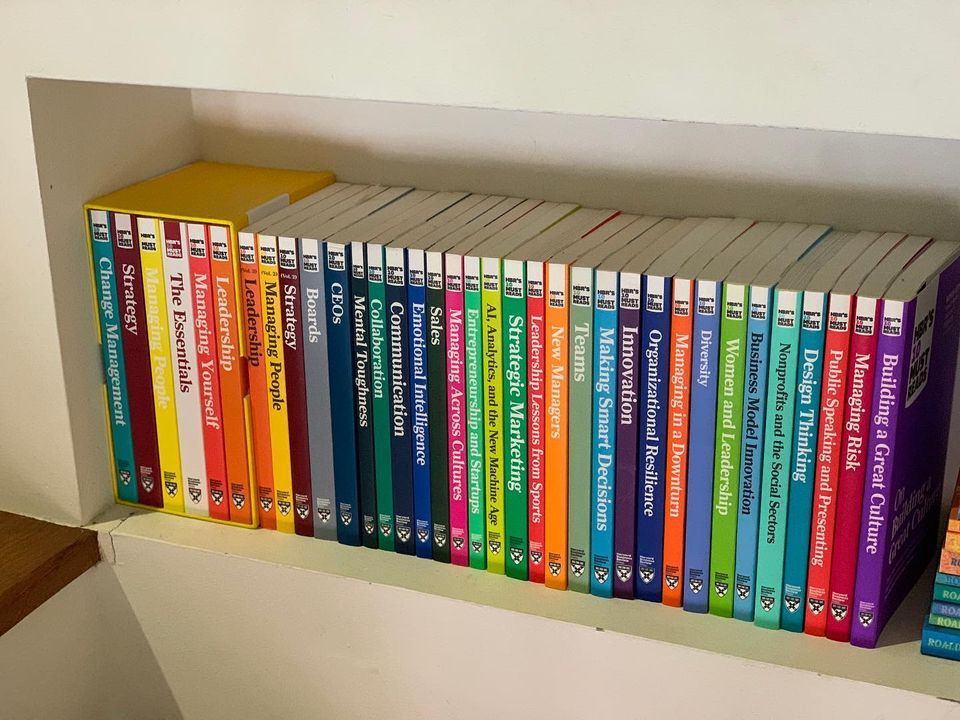Index while Read

Since the pandemic began in early Feb 2020, my reading speed is restored to a book per week given the grueling work schedule I have to undertake. Oftentimes, when I share my reading habits with friends, they often ask me the question, "Are you constantly reading for the sake of reading? What are your aims in reading?"
Frankly, I have resolved both questions years back when I heard an episode entitled "How to remember everything" on Worklife with Adam Grant's podcast. I will explain why and how reading has helped me to sharpen how I think strategically about different issues from business to geo-politics that are breaking the old paradigms in the past few years.
If you have listened to the episode, there are three key important points where Adam Grant explained why memory is important and can be put to good use. First, he spoke to Josh Foer, the author of the book "Moonwalking with Einstein" and a science journalist who went from having a poor memory to become the national champion for the United States Memory Championship. It is worth reading Josh's book as it depicted the different techniques in how you can improve your memory on knowledge which you want to retain. Second, Adam Grant illustrated the story of Sean McVay, a 30 year old NFL coach who can recall, on command, almost any moment he’s ever seen on a [American] football field. Third, you can train your brain to remember and retain important information. In Josh Foer's book, he presented different memory techniques, for example, using a location and description of items within that location such that it creates and maps different mnemonics. Pattern recognition and establishing mapping and links between objects and facts are different tools that you can use to build up your memory muscles.
For a long time, I have read without a purpose, other than analyze papers on my research areas in my previous life as an academic and learning new knowledge where I can incorporate new mental models to help me to think. The most important skill I have learned is to read, question and then read another book that furthers my understanding. For example, I like to describe situations like how a physicist builds mathematical models or a mathematician leverages game theory to analyze my opponents' next moves. Learning behavioral economics allows me to see beyond the logical steps in putting everything on a spreadsheet, calculate the tradeoffs and risks, and augment my existing frameworks in figuring out how a well designed system can be gamed with human behavior.
After listening to this podcast, I found the reason why I have always enjoyed reading and the real value that I want to extract from the exercise itself. From then, I have only one goal: I want to read, remember and index every strategy, tactic, mistake and difficult situation experienced by well-known businesses and startups for the past hundred years dated back to the Standard Oil owned by John D Rockefeller. Every book I read from investing to business operations, I draw important lessons of what the founder & his team have done right or wrong. This consequently builds a process to how to work through the challenges if I encounter a similar event in the future. I call this process indexing while reading.
As it is impossible to go through everyone's journey in business, learning and understanding the lessons from the past on how businesses incorporate innovation is important to me. If I want to build what truly matters, this is the most important playbook I have. It facilitates me on how to think a few steps ahead by remembering what has been there before and how different teams came to the conclusion to make the right or wrong business decision in the process. This follows how Sean Mcvay is utilizing his memory of every moves in the past NFL games to figure out the counter strategy against his opponent in his next NFL game.
While it sounds like a simple process, it is hard to execute. First, there are many volumes of information about businesses. My choice of books are in the following: the business operator's autobiography or biography followed by the business biography. There are situations where a great business operator does not write anything down other than shareholder letters, for example, Warren Buffett and Michael Burry. Hence if you want to index the lessons properly, you have to collect these information and place them in a way where you can recall them as quickly as possible.
Second, I have two questions when it comes to learning about a business which has either succeeded or failed. For successes, the important question one has to ask, "What does great look like for [company X]?". For failures, "What could my team or I have done differently in making the decision or call on how we move forward against a competitive threat or move beyond just being number one?" These questions form the bedrock on how I index business strategies and tactics. When I read, I am no longer going for a word for word analysis, but I am searching for the most important points which I have not previously interpreted the same information with another perspective or point of view.
Third, we are not silicon computers but carbon based living creatures with limited memory capacity. You need to have means and ways to remember each situation. I used annotations and highlights in digital books to help me remember each situation and when I encounter a situation, I will remember the part which I have annotated followed by retrieving the information from the book even if there is only physical copy of the book.
Here are three examples of books which I have read and index certain key points which I learned a few things from:
"The Man Who Solved the Market: How Jim Simons launched the Quant Revolution" by Gregory Zuckerman: The book is about the history of Jim Simons, a well-known mathematician who created the Chern-Simons theory that has profound influence to theoretical physics and condensed matter theory. I learned the Chern-Simons theory when I was studying string theory in Cambridge, but was not aware that Simons went on to build Renaissance, a hedge fund that has the strongest return on investments (ROI) against other funds, for example, Buffett's Berkshire Hathaway and Ray Dalio's Bridgewater funds. If you read the book, Simons brought in brilliant mathematicians and physicists who built the machine learning algorithms in the past few decades. The one lesson I indexed from him from the book, "Don't be greedy, if you have already made the money, walk out when the table is still hot." In doing that, he has infuriated brilliant mathematicians and computer scientists, for example, Leonard Baum, most well-known for the Baum-Welch algorithm who devised the winning strategies, left the firm out of frustration and made huge losses after leaving Renaissance. Jim Simons' years of success revealed that he was able to know when it is the right time to walk out of the table in a high stakes poker game like trading in Wall Street.
"The Ride of a Lifetime: Lessons Learned from 15 Years as CEO of the Walt Disney Company" by Bob Iger: For most people who have read the book, the key takeaways of the book will be how Bob Iger have made bold moves and aligned his stakeholders in the media and entertainment industry by acquiring Pixar, Marvel and Star Wars, bringing Disney back to life with disruptive moves like Disney+. I index a different and secondary lesson from what most people will read from the book. You may not know this fact: very few number twos in any corporation, who progressed to the role of the CEO, had succeed in the job. What this book told me, is how to index a number two so that you know that he can be an extraordinary number one. If you read the book carefully, the influence of Tom Murphy, a legendary business operator, entrepreneur and mentor to Bob Iger showed him the path to how to make good bets and decisions to grow the business. It is the influence of an entrepreneur to the number two which is what I understood from the book.
"The Company I keep: A Life in Beauty" by Leonard Lauder (son of Estee Lauder): What I have indexed from the book, is how to bring up the children of a family business so that they can take over the business someday. It is often a challenge in Asia for family businesses where succession takes the centre stage in identifying the right person to take it on. If you have read the book, Leonard Lauder explained his upbringing from understanding how his mother sells and innovates on the Estee Lauder brand and his father operates the business in a systematic and logical matter. Leonard Lauder took a major decision to join the US navy as a military officer for a few years to learn more about the world. After launching his own brand, Clinique, he made a different move from his mother by turning Estee Lauder into a multi-brand conglomerate and faced resistance even from the founder herself. If you want to understand the psyche of your children and how to let go and let them take over your business, Leonard Lauder's book is a must read.
The index while read approach is how I have taken my reading to the next stage. Even if you read every piece of information and index every situation, do remember this quote from Mike Tyson:
"Everybody has a plan until they get punched in the mouth."
Last but not least, history does not repeat itself and does rhyme, and remember that you have to adapt the strategy for the changing times, because situations and circumstances change in a different age and time.

